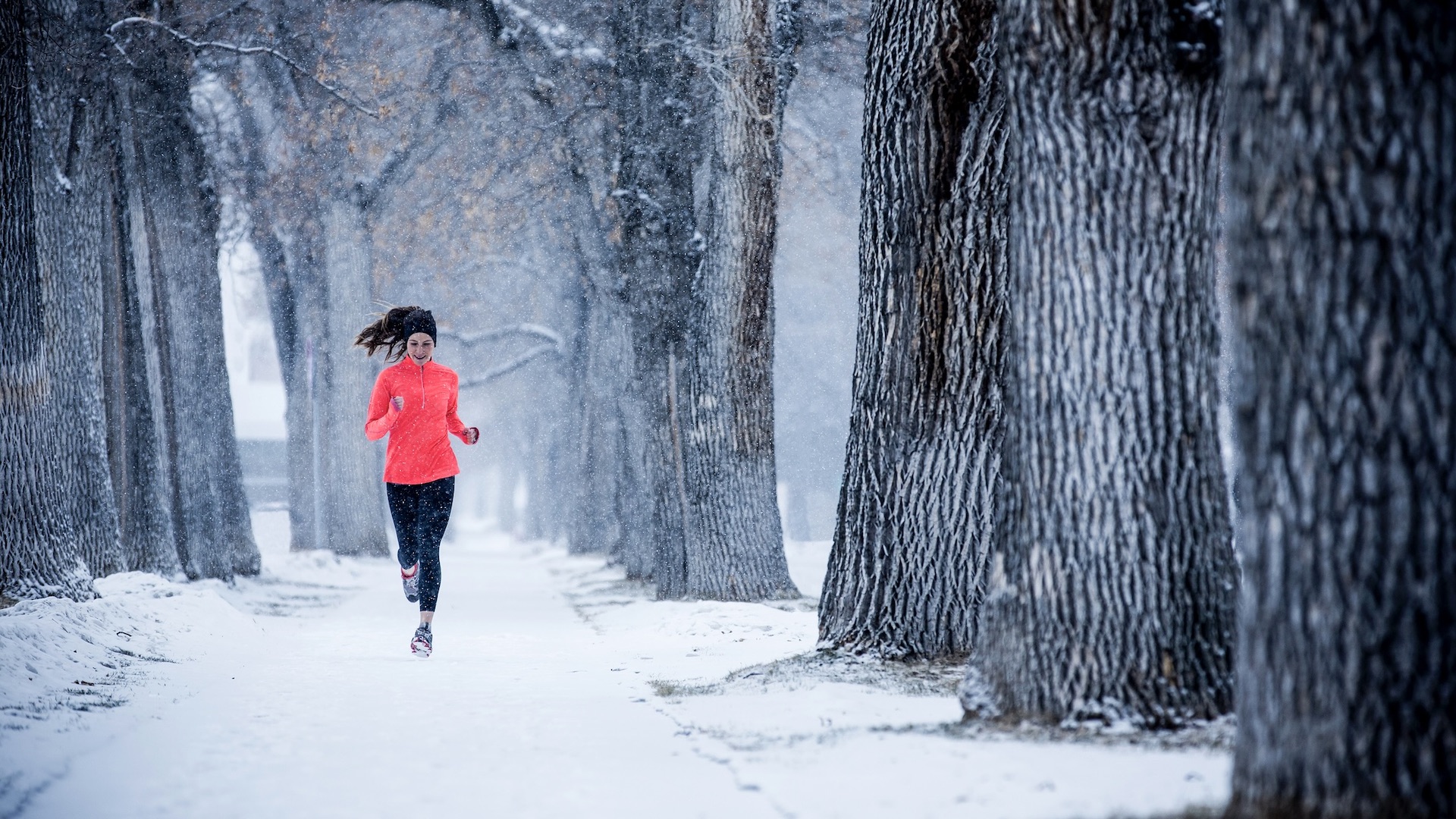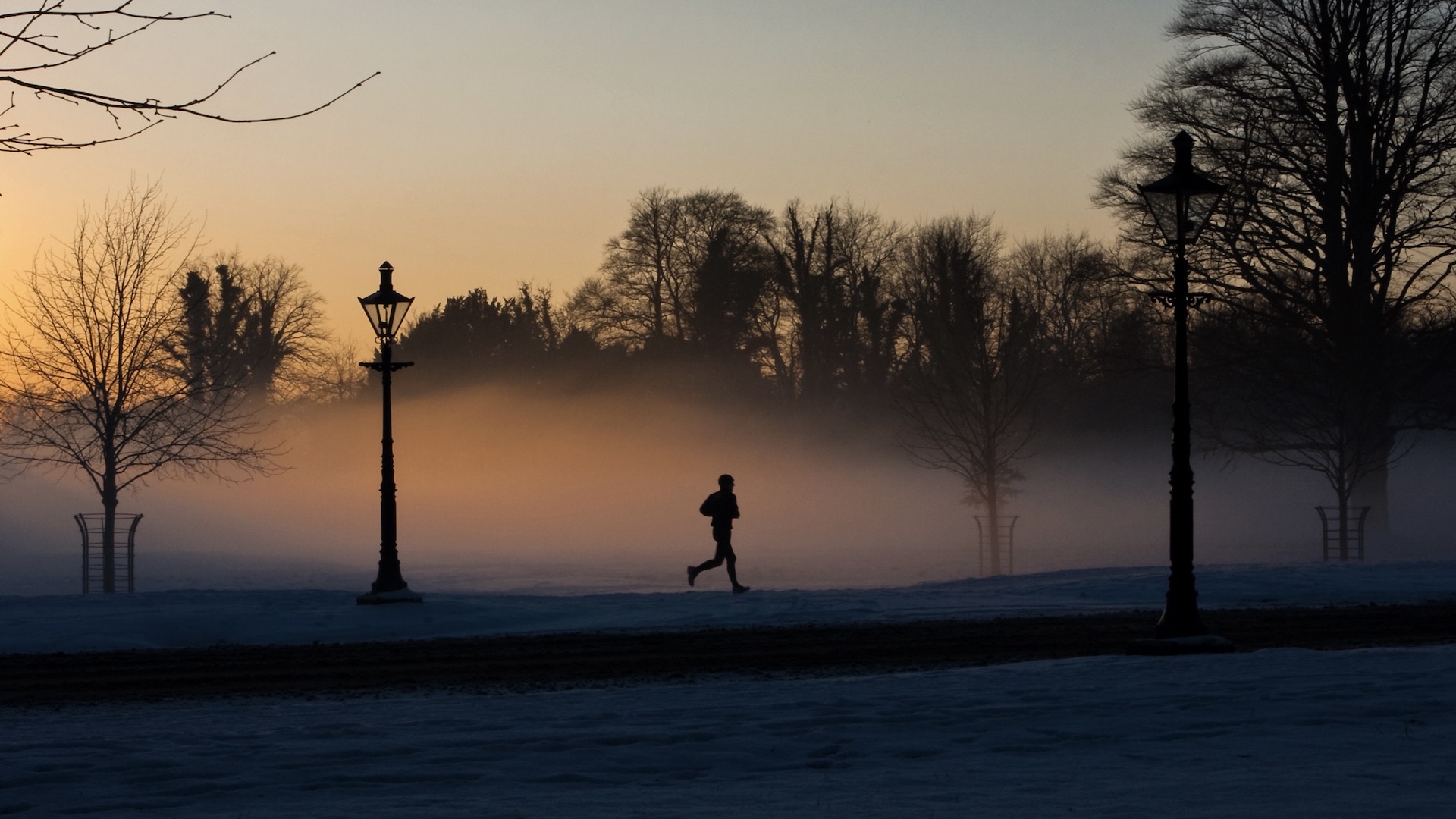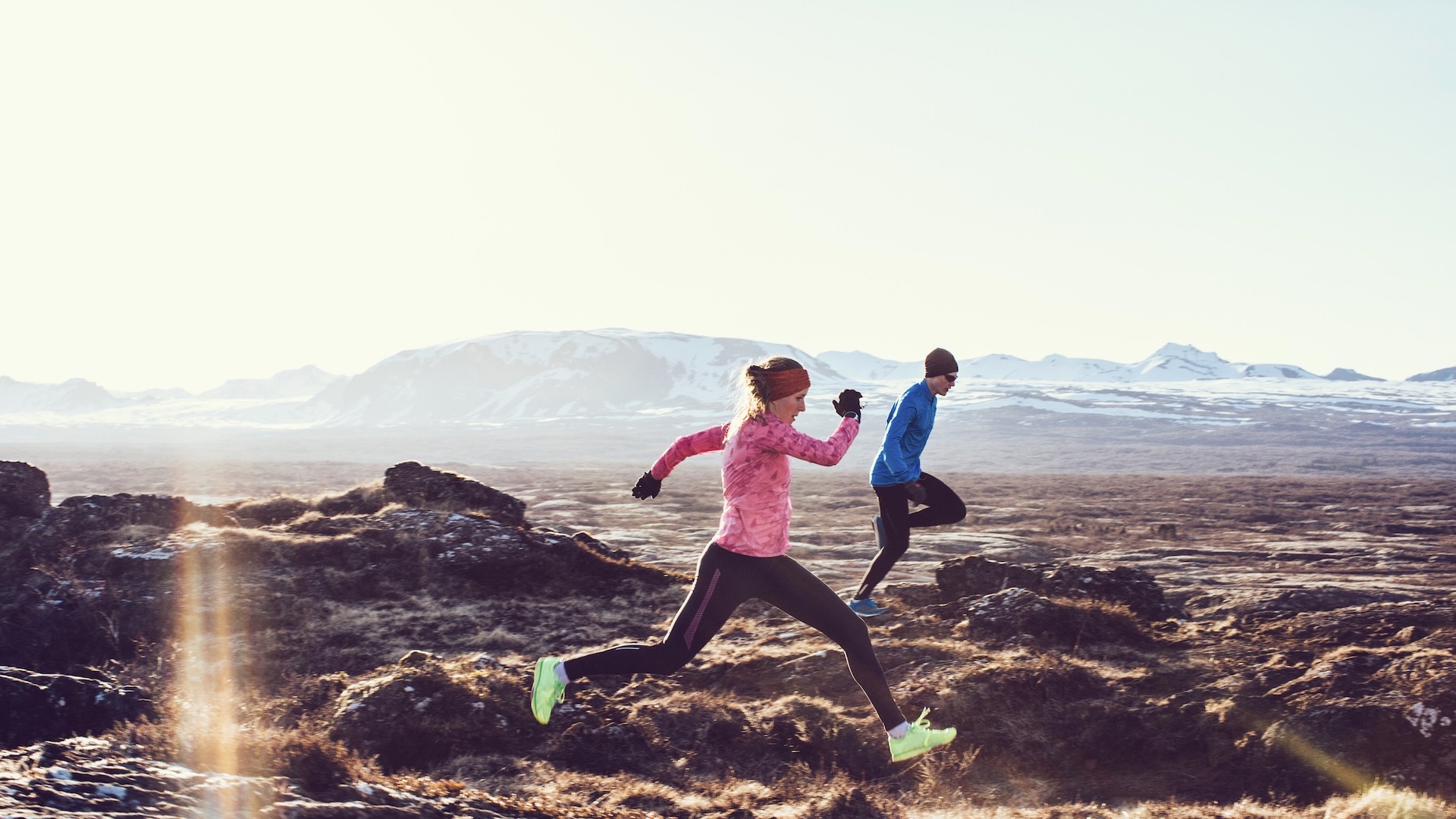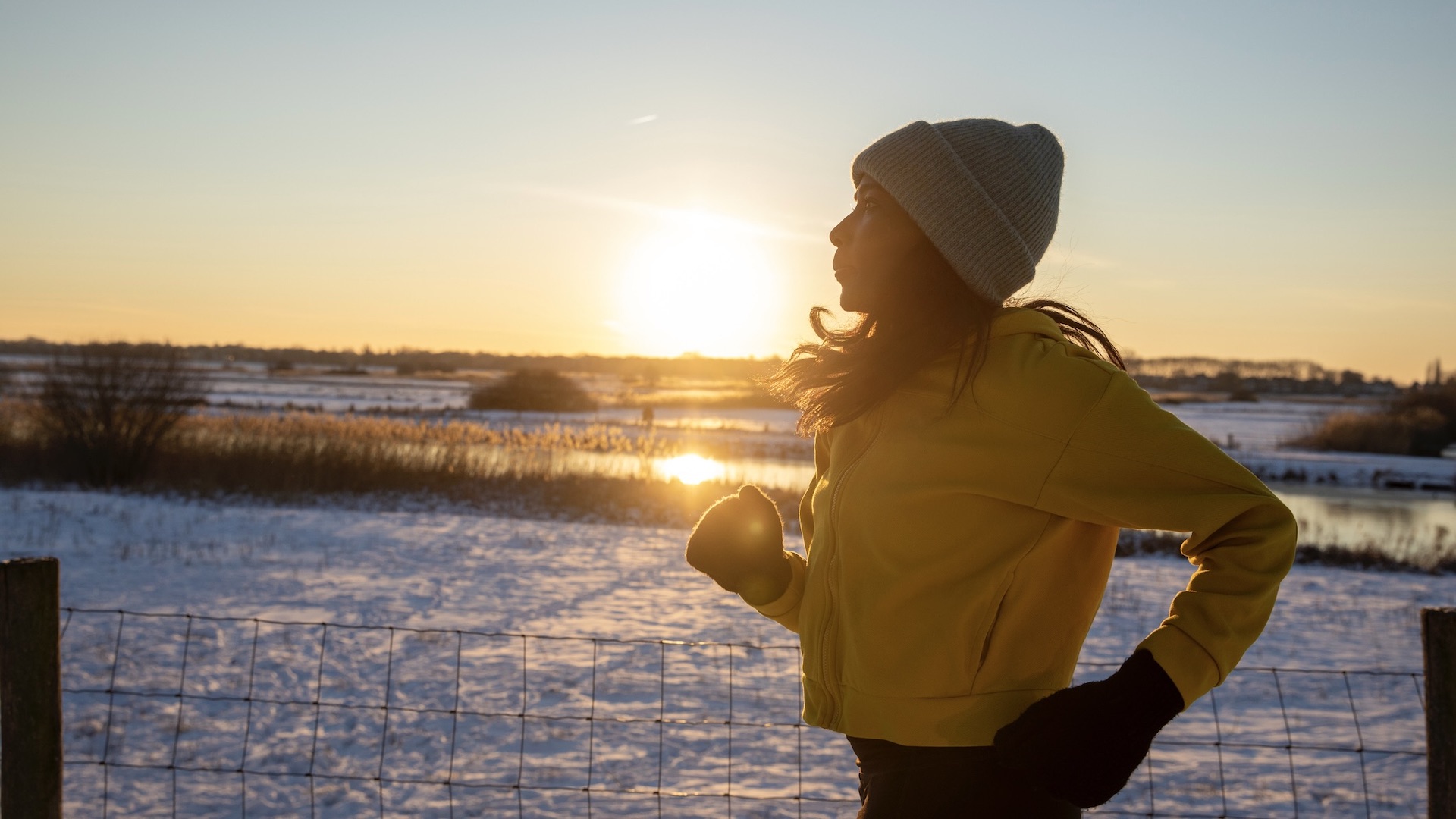
Winter running can be a big test for your motivation. When it’s cold, wet or windy outdoors, the hardest thing for many people is to pull on running footwear and clothes and get outdoors. But there are some surprising benefits of running through the winter.
Beat the winter blues
Many people suffer with Seasonal Affective Disorder (SAD) in the winter, when daylight is much reduced. It’s sometimes called the winter blues, or winter depression.
It’s thought that SAD is linked to reduced daylight hours and sunshine in the winter. The theory is that light stimulates a part of the brain called the hypothalamus, which controls mood, sleep and appetite and affects how you feel. Sunlight also plays a critical role in levels of important Vitamin D.
This means that it’s even more vital in the winter to get some time outdoors, especially around mid-day when there is the most light from the sun (even if it is low in the sky). If you can, aim to get outdoors at weekends for longer spells, too.
While sunlight is still in limited supply in winter, hence the benefits might also be limited, there are the additional advantages of going out for a run if you can choose rails located in natural surroundings. There is a wealth of research on the topic including a study that found that 30 minutes in nature a day can increase mood, well-being, meaning in life and mindfulness.
Body warmer
Sitting at your desk, whether at the office or at home, in winter can leave you feeling chilly. Many people find their hands and feet suffer the most.
One great solution is a winter run. Warm up first so you are not running with freezing feet – and remember to wear running gloves – then enjoy the circulatory boosting benefits of a run in the outdoors.
Treadmill running can also reap similar body warming benefits.

New sights and scenery
Winter landscapes can be stunningly beautiful. Even a normally ordinary setting, in a place where you often run, can look picture-postcard pretty with frost on the ground, a blanket of snow or with the background of a low setting sun.
The drama of a day or heavy rain or the effects of the rain, such as a fast-flowing river or waterfalls, or perhaps strong winds and crashing waves on a beach, can all provide new sights and sounds for runners.
Racing highs
While many runners think of the racing season as the summer, there are running races that take place year round.
Many people participate in cross-country races, while others enjoy winter hill races. Don’t forget the weekly opportunity to join a parkrun, too.
Races can provide a surprisingly good goal for motivation and the rewards include both mood and fitness boosts for every event completed.

Friendship
You will learn who your true running friends are – and most likely make new friends – if you choose to run with other people in the winter. Good friends motivate each other to run by organising days and times for winter outings.
You might well make new friends if you participate in winter races, which means you’ll probably make new training buddies as well.
Another source of new friendships can be revealed if you belong to a club or a social media group. Why not ask other people if they would like to go out for a winter run and make like-minded friends as you adventure?

New challenges
A regular running route can become a whole new challenge in different weather conditions. Even the most straightforward outing becomes more challenging when it is driving rain, wind or snowy.
We are not encouraging you to go outdoors when conditions are dangerous, but it might be that you choose to run a route in the snow while wearing micro-spikes on your footwear, or you discover the benefits of a a run in headwind.
Learn new skills
Running in winter can call for new skills. If you are a keen hill or mountain runner, you will want to ensure your personal safety by signing up to winter skills courses that teach you how to navigate and survive in winter conditions. It can actually be a lot of fun – as well as potentially life-saving – learning how to build a shelter in snow, how to effectively use an ice axe or about avalanche awareness.
There are other skills that you might want to learn, such as back country skiing, Nordic skiing or ice skating. They can employ similar muscles to running, so you will be building strength, and these activities allow you to maintain fitness when running in winter conditions is tricky.

Retail therapy
Every so often it’s nice to be kind to yourself and buy a new item of kit. In the winter, runners do need to think about safety and essential new winter running gear might include micro-spikes, waterproof socks, winter running tights, a waterproof jacket, as well as running gloves and headwear.
More time for strength
The chances are you will end up running on fewer days and doing a low mileage over winter, simply because the weather and conditions are not in your favour. However, there is no reason why you can’t use the spare time for other elements of training that will be beneficial in the longer term.
Why not build on your strength or flexibility, or find other ways to provide a more rounded form of fitness, such as going swimming or cycling on a turbo trainer?

To feel smug!
You can allow yourself a tiny sense of smugness because you have gone for a run on a day of poor winter weather, when many other people have stayed at home to watch the TV or scroll through social media.
To have some me-time
The winter includes the festive season when there is a greater emphasis on spending time with friends and loved ones. This is not necessarily a bad thing, but it can become claustrophobic. If you re a runner, you can make your excuses and exit the gathering/s for a lovely solo run and to enjoy some much-needed me-time.

You’ll bounce into spring
If you continue to run and train through the winter, your fitness will be maintained and you’ll find that when you arrive in springtime you are in better shape than other runners who have not managed to keep going through winter.







